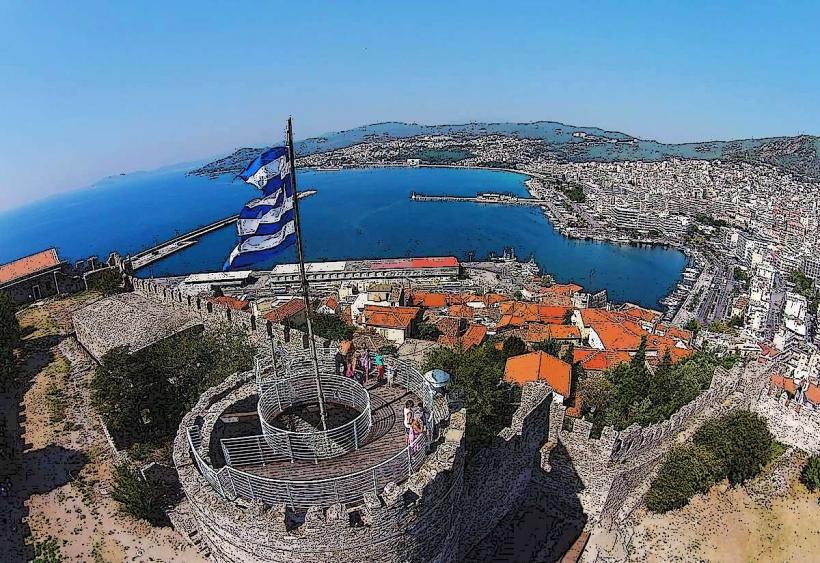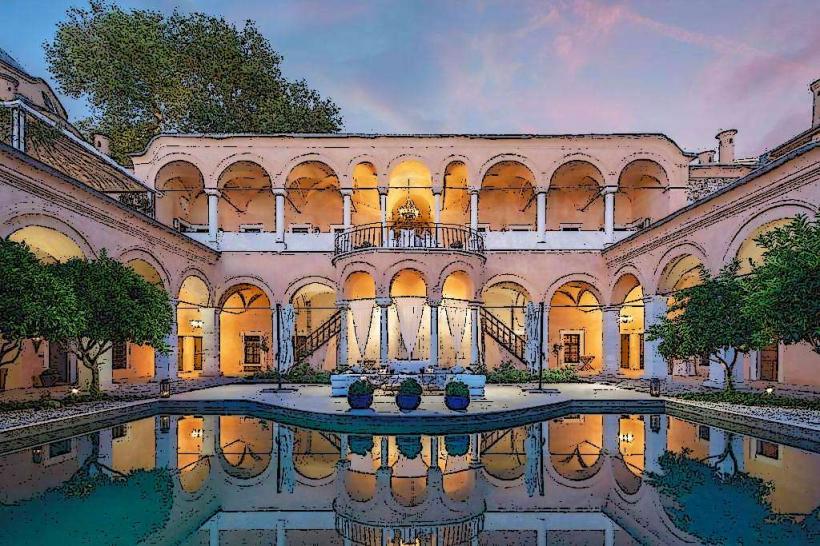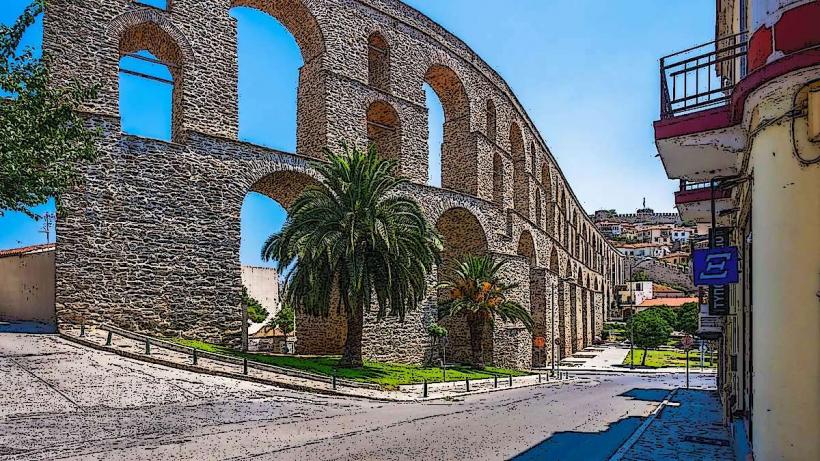Information
Landmark: Archaeological Museum of KavalaCity: Kavala
Country: Greece
Continent: Europe
The Archaeological Museum of Kavala is one of the key cultural institutions in Kavala, a port city in northern Greece. It houses an extensive collection of archaeological artifacts that span from the prehistoric to the Roman and Byzantine periods, shedding light on the rich history of the region. The museum provides a deep dive into the ancient past of Kavala and its surrounding areas, including the ancient city of Philippi.
1. Historical Background
- The Archaeological Museum of Kavala was founded in 1960, but its roots go back to earlier excavations in the region, particularly in Philippi, an important ancient city close to Kavala. The museum was established to preserve and exhibit the many artifacts uncovered during archaeological excavations in the region.
- The museum is housed in a modern building, and its collection is primarily focused on the ancient history of Kavala (ancient Neapolis) and Philippi, one of the most important archaeological sites in Greece.
- Over the years, the museum has expanded its collection through excavations and donations, and it continues to play a vital role in preserving the ancient heritage of the Kavala region.
2. Collection and Exhibits
The Archaeological Museum of Kavala boasts a diverse and rich collection, including items from several significant archaeological sites in the region, especially Philippi, Neapolis, and Thasos. Its exhibits span various historical periods:
Prehistoric and Early History
- The earliest artifacts in the museum come from prehistoric settlements in the Kavala region. These include stone tools, pottery, and objects from the Neolithic and Chalcolithic periods, reflecting the long history of human presence in the area.
- The museum also displays Mycenaean pottery and objects from the Bronze Age, highlighting the region's connection to the broader Aegean civilization.
Classical and Hellenistic Periods
- The museum’s Classical and Hellenistic collections are among its most important. Notable items include statues, statuettes, and inscriptions that provide insight into the cultural and political life of ancient Neapolis and its close relationship with the city of Philippi.
- The museum showcases many Greek sculptures from the Classical period, some of which have been recovered from the ancient theater of Philippi.
- Also on display are coins, pottery, and everyday objects that reflect the lifestyle and art of the people in this period.
Roman Period
- The Roman period is particularly significant in the museum’s collection, reflecting the importance of Philippi as a Roman city. Philippi was the site of the famous Battle of Philippi (42 BCE), where Julius Caesar's assassins were defeated by the forces of Mark Antony and Octavian (later Augustus). Artifacts from this period include Roman coins, inscriptions, and sculptures that offer insights into the city’s role as a Roman administrative and military hub.
- The museum also displays numerous Roman statues, mosaics, and bronze artifacts from both Philippi and Neapolis, illustrating the influence of Roman culture on the region. These items reflect the Romanization of the area and its development as a provincial Roman capital.
Byzantine and Later Periods
- In addition to the Classical and Roman artifacts, the museum also houses important objects from the Byzantine period. The Byzantine collection includes ceramics, icons, sculptures, and religious objects that represent the significance of Kavala and the surrounding areas during the Byzantine Empire.
- There are also exhibits showcasing the Ottoman period in the region, including everyday objects, weapons, and tools, offering insight into the life and culture of the Ottoman inhabitants of the area.
3. Special Exhibitions and Educational Programs
- The Archaeological Museum of Kavala regularly hosts temporary exhibitions that highlight specific aspects of ancient Greek culture, as well as educational programs and lectures designed to engage visitors and promote learning about the archaeological heritage of the region.
- The museum also offers guided tours and workshops for both students and visitors, making it a key cultural hub in the area. These programs are designed to provide in-depth knowledge about the exhibits and the historical context of the artifacts.
4. Notable Artifacts
Some of the museum’s most notable and unique artifacts include:
- A marble statue of a youth, likely from the Hellenistic period, which represents the high quality of sculpture from the region.
- Roman mosaics and architectural fragments from Philippi that demonstrate the city’s grandeur during the Roman era.
- A significant collection of ancient inscriptions (including Greek and Latin) that shed light on the administration, religion, and daily life in ancient Philippi.
- Coins from various periods, including Roman and Hellenistic, which help to understand the economic history of the region.
- Funerary stelae and grave markers, many of which come from ancient cemeteries around Philippi.
5. Museum Layout and Design
The Archaeological Museum of Kavala is designed with modern exhibition standards in mind, allowing visitors to explore the collections in a spacious, well-lit environment. The museum’s design includes:
- Permanent exhibition halls dedicated to different time periods, with clearly labeled artifacts and informative plaques.
- Interactive displays and multimedia presentations that bring the ancient world to life and provide additional context for the exhibits.
- The museum also has a gift shop where visitors can purchase books, replicas, and other educational materials related to the museum’s collection.
6. Visiting Information
- Location: The museum is located in the center of Kavala, not far from the city’s harbor and castle, making it easily accessible for visitors.
- Opening Hours: The museum is typically open to visitors from Tuesday to Sunday, with specific opening hours. It is closed on Mondays and public holidays. It is advisable to check the museum's website or contact them directly for updated information about opening times and special events.
- Entry Fees: The museum generally has a modest entrance fee, and there may be discounts for students, senior citizens, and groups. There may also be free entry on special occasions, such as International Museum Day.
7. Nearby Attractions
- Philippi Archaeological Site: Just a short drive from Kavala, the Philippi Archaeological Site is one of the most important ancient sites in Greece, known for its Roman theater, basilicas, and Christian churches. Visitors to the Archaeological Museum of Kavala can easily combine their visit with a trip to Philippi.
- Kavala Castle: A short distance from the museum, Kavala Castle offers stunning views over the city and the sea. The castle itself is a mix of Byzantine and Ottoman architecture, and its history is closely intertwined with the region’s past.
- Imaret of Kavala: This Ottoman-era building, now a luxury hotel and cultural venue, is another significant landmark in the city that visitors can explore while in the area.
8. Conclusion
The Archaeological Museum of Kavala is an essential destination for those interested in the ancient history of Kavala, Philippi, and northern Greece. Its diverse collection of artifacts from various periods—ranging from prehistoric times to the Byzantine era—offers a comprehensive look at the region's historical development. The museum not only serves as a place for preserving the past but also as an educational resource for understanding the rich cultural heritage of the area. Whether you’re an archaeology enthusiast or simply interested in learning more about this fascinating part of Greece, the museum provides an enriching experience for all visitors.




